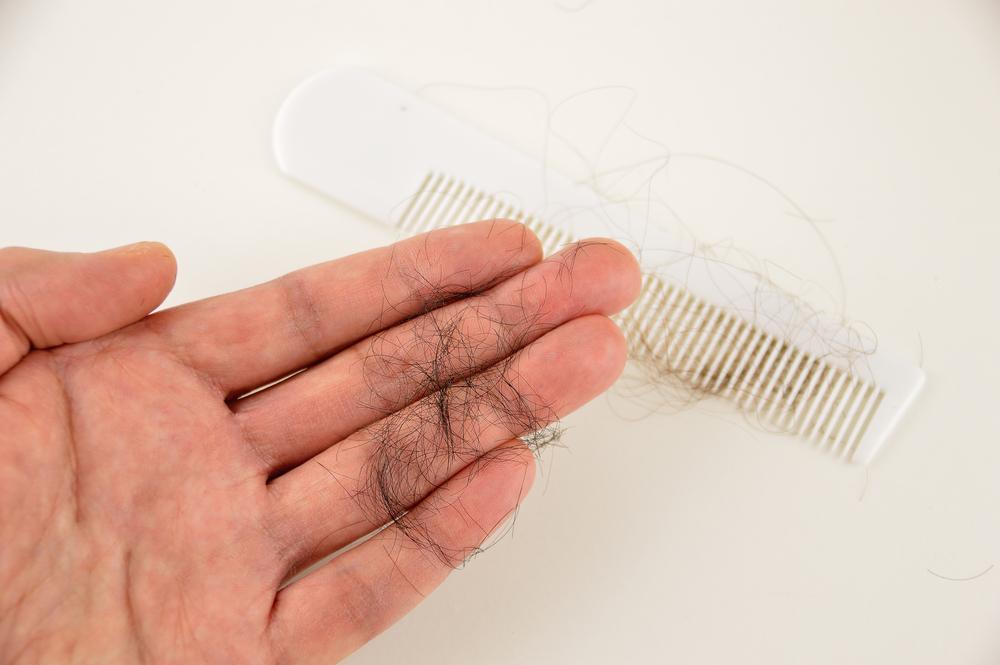
Hair loss is a challenge for any individual to endure and it is a condition that affects both men and women. While male pattern baldness is perhaps the most well-known form of hair loss, hair loss and hair thinning can occur for a multitude of different reasons and the potential causes can differ between men and women. Hair loss can cause an individual to experience a loss of confidence due to their changing appearance. This self-consciousness and permeate into many other facets of life and negatively affect your happiness and quality of life. However, this is not how it has to be. Some individuals become overwhelmed by the sheer volume of treatment options available and their wide variety of cost and severity. Available hair treatment options range from homeopathic and natural remedies to medicated shampoos to hair tattoos to hair transplant surgeries and everything in between. While it is wonderful that there is a wide marketplace of treatment options and products available, it can be a challenge to identify the right one and weed out the products and treatments that claim to help regrow lost hair but don’t live up to expectations. Finding the right treatment option begins with identifying the type of hair loss and the underlying cause. To help you understand the similarities and differences between men’s hair loss and female hair loss, we have put together an informational guide. The guide delves into what the normal hair growth process is, the different types of hair loss and how they disrupt the normal hair growth process, and common causes of hair loss and hair thinning.
The Hair Growth Process

Before delving into the different types of hair loss, it is important first to understand the normal hair growth process. Hair loss or hair thinning occurs when the normal hair growth process is disrupted in some way. This disruption can affect one phase of the hair growth process or completely halt hair from growing. The type and severity of the disruption to the hair growth process can vary based on the individual and the circumstances. However, some types of hair loss reference specific phases of the hair growth process that are affected. To help you better contextualize and understand these nuances, we want to provide you with a brief overview of the three phases of the hair growth cycle and what occurs during each phase. Below is an overview of the three stages of the hair growth process: anagen, catagen, and telogen.
- Anagen: Anagen is the active phase of the hair growth cycle. During this stage, the cells that comprise the root at the base of the hair are dividing quickly. This continual process of division produces new hair that is catapulted to the surface in order to replace a club hair. A club hair is a hair that is no longer in the Anagen growth phase and will no longer grow.
- Catagen:Catagen is the transitional phase of the hair growth cycle. On average, three percent of all hairs are in this phase at a time. During this phase, the active growth phase ceases, and the outer root sheath shrinks and attaches to the root of the hair. This is the process by which a club hair is formed.
- Telogen: Telogen is the resting phase of the hair growth cycle. At any given time, six to eight percent of all the hairs on your scalp is in the Telogen stage. During the Telogen phase, the hair follicle is no longer growing and is instead merely at rest. The Telogen phase marks the completion of the club hair formation. On average, twenty-five to a hundred Telogen hairs are naturally shed from the scalp each day.
The Different Types of Hair Loss

Many people do not realize that different types of hair loss can affect individuals. While there are many different types of hair loss, there are several types that are the most common among men and women. It is important to keep in mind that the medical term for hair loss is “alopecia.” Alopecia by itself is not a specific type of hair loss, but rather a blanket term used to describe any form of hair loss. Below are a handful of the most common types of hair loss that affect men and women and a brief description of each.
Telogen Effluvium
One of the most common types of hair loss that affects both men and women is telogen effluvium. Effluvium means “outflow” and can affect different phases of the hair growth cycle; however, the most common type of effluvium for individuals to experience affects the telogen phase of the hair growth cycle. Telogen effluvium occurs when the number of hair follicles growing hair drops significantly. Instead, a growing percentage of hairs are in the telogen or resting phase, of the hair follicles. This leads to an increase in dormant hair follicles, which results in an increased amount of shedding. If you are noticingsigns of thinning hair, such as diffuse thinning of the hair on the scalp (either even or uneven), then telogen effluvium may be the culprit. It is important to keep in mind that individuals who experience telogen effluvium do not lose all of the hair on their scalp, but the hair loss can be quite extensive and severe depending on the individual circumstances.
Anagen Effluvium
As mentioned above, effluvium hair loss can affect various stages of the hair growth process. Anagen effluvium affects the active growth phase of the hair growth process. Because anagen effluvium disrupts the anagen phase of the hair growth process, which account for the majority of the hairs on the scalp, it will often develop much more rapidly and individuals suffering from anagen effluvium can lose all of their hair. Anagen effluvium most often affects individuals who are taking cytostatic drugs to combat cancer or who have ingested a poisonous, toxic substance, such as rat poison. The reason that these types of substances cause anagen effluvium is that the substances inhibit rapid cell proliferation, which is integral to the hair growth process. Because of this interference, the production of hair fiber will cease, and hair will cease growing.
Alopecia Areata
Alopecia areata is another common form of hair loss that affects both men and women. In a lifetime, the risk for developing alopecia areata is around two percent. Alopecia areata is not contagious but is believed to be an autoimmune disease. Alopecia areata is believed to arise when an individual’s immune system mistakenly attacks the hair follicles. There is no concrete scientific answer yet to explain how or why the body mistakenly activates the immune system, and the hair follicles are targeted. Alopecia areata is characterized by the presence of circular or oval shaped bald patches on the scalp. Hair loss caused by alopecia areata can appear suddenly and progress quickly. Unlike other autoimmune diseases, although the hair follicles are experiencing an inflammatory response, they are not completely destroyed. The hair follicles can regrow once the inflammation subsides. Many men and women who experience alopecia areata only have one or two bald patches and will have a full recovery within two years of the onset of the hair loss. However, in roughly thirty percent of the individuals who experience alopecia areata, the condition persists and become more severe over time.
Androgenetic Alopecia (Male or Female Pattern Baldness)
Androgenetic alopecia is one of the most common and widely recognized forms of hair loss. Androgenetic alopecia is often known by the names of male pattern baldness or female pattern baldness, respectively. For many years, scientists believed that thesetypes of balding were caused by high levels of testosterone, the male sex hormone. However, in recent years the consensus of scientists has shifted, and the culprit has changed to Dihydrotestosterone (DHT). DHT is a derivative of testosterone. In the hair follicle’s oil glands, there is an enzyme called 5-alpha-reductase, which aids in the conversion of testosterone to DHT. When testosterone is converted to DHT, it binds to the receptors in the scalp follicles and shrinks them, preventing healthy hair from surviving or growing. While this process can take place in both men and women, women only possess a fraction of the amount of testosterone that men do. Have you ever asked yourself, “why do men lose hair?” Male pattern baldness is a likely explanation. Below are the most common manifestations of androgenetic alopecia in men and women.
Men:
- Gradual recession of the front of the hairline in the beginning stages of the hair loss process
- Gradual thinning of the hair on the temporal areas of the hair, which results in a changed hairline
Women:
- Frontal hairline is often preserved
- Diffuse hair loss over the crown of the head
- Gradual thinning of the hair over the entire scalp
- Some instances of temporal hair recession, though often to a less severe than in men
With this understanding of the most common types of hair loss in mind, it is now important to examine some of the most common causes of hair loss in men and women.
Common Causes of Hair Loss in Men and Women

One of the biggest differences in hair loss between men and women is the potential causes. Some causes affect both men and women but are more common for one group. In other cases, the cause of the hair loss may be solely limited to men or women. Below is a list of common causes of hair loss in both men and women.
- Hormonal Imbalance: Many people do not realize the relationship betweenhormones and hair loss. Your body relies on a delicate balance of hormones to remain in a stable and consistent state, and a change to any of the hormone levels in your body will produce different side effects. For women, one of the most common hormonal imbalances that can result in hair loss is after giving birth. When a woman’s body gives birth, it undergoes a rapid shift in hormones. For some women, this can result in hair loss. Another common hormonal imbalance that can cause hair loss in women is due to taking or switching birth control pills. Many birth control pills contain doses of estrogen and progestin, which have a significant impact on the body. If for some reason the levels become imbalanced, hair loss can result. Men can also experience hair loss due to a hormonal imbalance.
- Stress: One of the most common causes of hair loss in men and women is stress. Stress can throw the body in a state that causes it to react much differently than it normally would, and in some cases, a stressor can cause telogen effluvium to occur. Often this type of hair loss will abate once the stressor is removed and the body returns to a state of stability.
- Anemia: Another cause of hair loss that affects both men and women is anemia, which is also known as an iron deficiency. This cause of hair loss can often be remedied through the use of a daily iron supplement.
- Heredity: Unfortunately, some individuals are more likely to develop hair loss during their lifetime due to their heredity. This cause of hair loss affects both men and women and can be the most difficult to contend with as there is no simple solution.
Finding The Right Treatment

If you are experiencing hair loss and looking to regrow your lost hair, then finding the right treatment option is essential. The first step to finding the right treatment option is identifying the underlying cause of the hair loss. Once the underlying cause is identified, you then must explore the various treatment options and products available to find the right treatment option for you. For individuals looking for a proven effective hair loss solution, Scalp Med offers a range of products that have been shown to halt and reverse hereditary hair loss. Scalp Med’s unique 2-step process restores lost hair without surgery or sexual side effects. In addition, Scalp Med also offers a shampoo for hair growth that is able to penetrate and strengthen the hair shaft, while also thickening the hair to restore volume. If you are looking for an effective treatment for your hair loss, Scalp Med is the answer.



